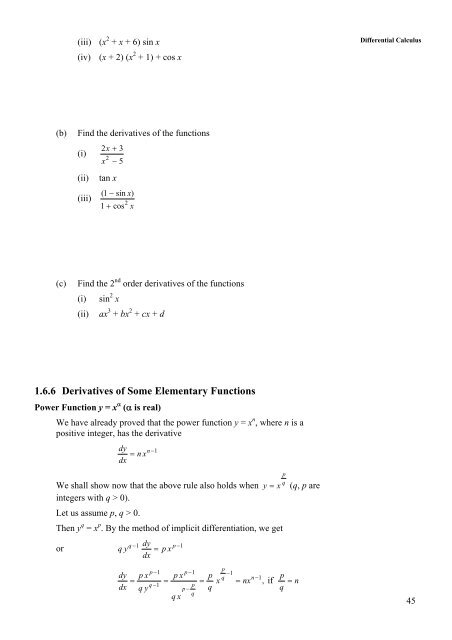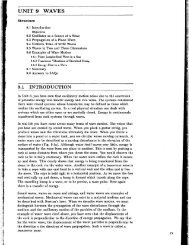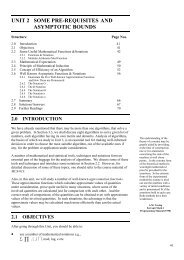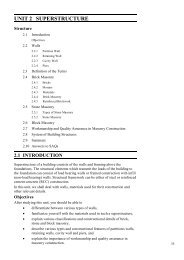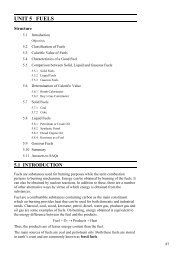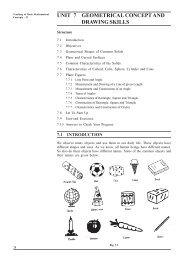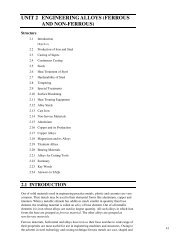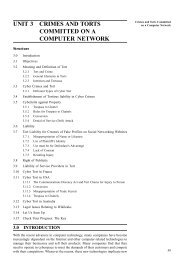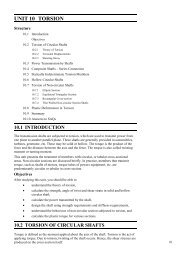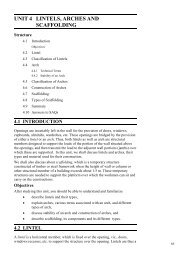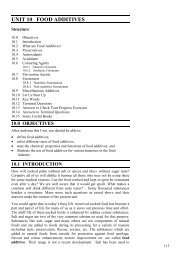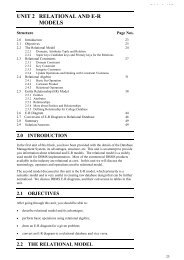unit 1 differential calculus - IGNOU
unit 1 differential calculus - IGNOU
unit 1 differential calculus - IGNOU
You also want an ePaper? Increase the reach of your titles
YUMPU automatically turns print PDFs into web optimized ePapers that Google loves.
(iii) (x 2 + x + 6) sin x<br />
(iv) (x + 2) (x 2 + 1) + cos x<br />
(b) Find the derivatives of the functions<br />
(i)<br />
2x<br />
+ 3<br />
x<br />
2 −<br />
(ii) tan x<br />
(iii)<br />
( 1<br />
1 +<br />
5<br />
− sin x)<br />
2<br />
cos<br />
x<br />
(c) Find the 2 nd order derivatives of the functions<br />
(i) sin 2 x<br />
(ii) ax 3 + bx 2 + cx + d<br />
1.6.6 Derivatives of Some Elementary Functions<br />
Power Function y = x α (α is real)<br />
We have already proved that the power function y = x n , where n is a<br />
positive integer, has the derivative<br />
dy<br />
dx<br />
=<br />
n<br />
n x<br />
−1<br />
We shall show now that the above rule also holds when<br />
integers with q > 0).<br />
Let us assume p, q > 0.<br />
Then y q = x p . By the method of implicit differentiation, we get<br />
or<br />
q y<br />
dy<br />
= p x<br />
dx<br />
q −1<br />
p −1<br />
p −1<br />
p −1<br />
p<br />
−1<br />
dy p x p x p q n<br />
= = = x = nx<br />
dx q −1<br />
p<br />
q y<br />
p − q<br />
q<br />
q x<br />
−1<br />
p<br />
q<br />
y = x (q, p are<br />
,<br />
if<br />
p<br />
q<br />
= n<br />
Differential Calculus<br />
45


